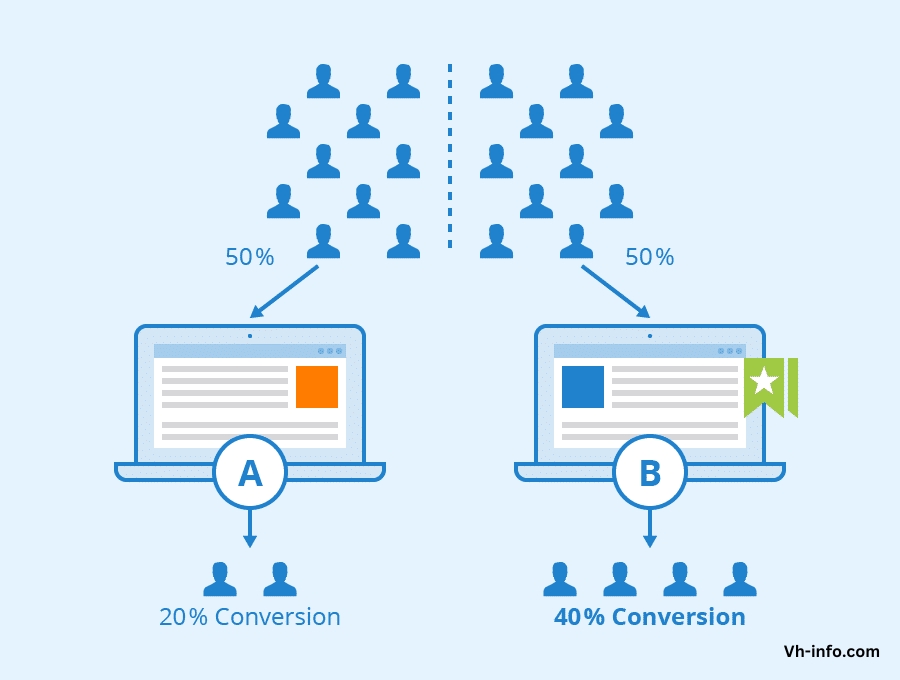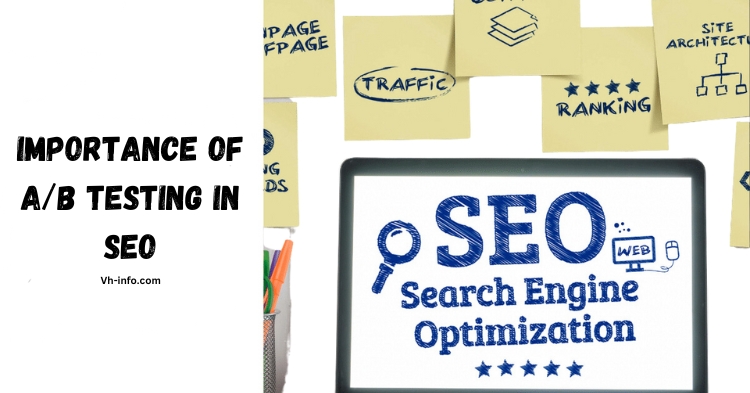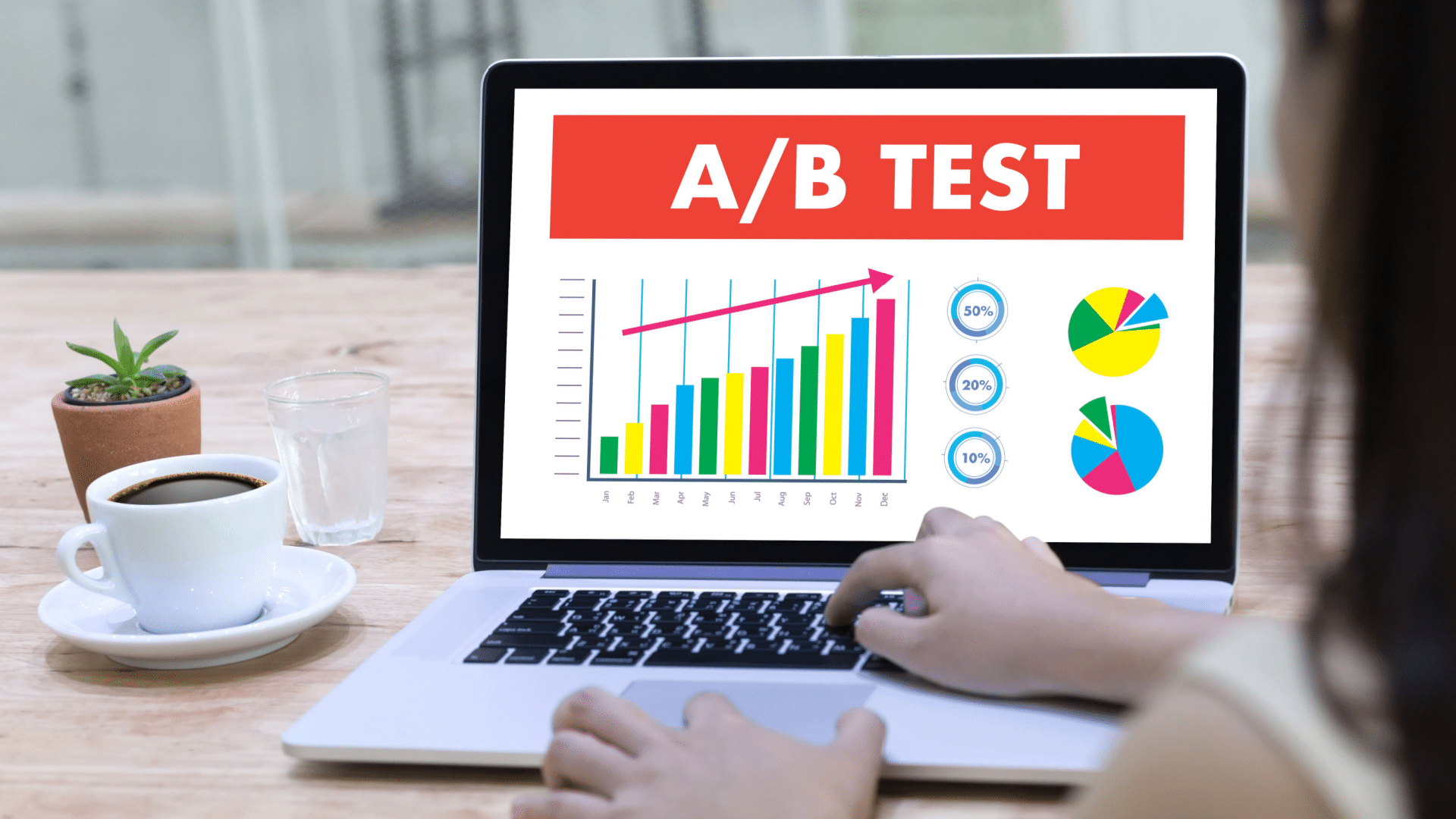A/B testing, also known as split testing, is a powerful tool for conversion rate optimization and improving user experience on websites.
However, when it comes to search engine optimization (SEO), website owners must be cautious about how they implement A/B testing to avoid negatively impacting their SEO efforts.
In this article, we’ll explore the importance of A/B testing in SEO, potential issues that may arise, and best practices for conducting A/B tests without compromising your SEO performance.
What is A/B Testing in SEO?

A/B testing in SEO, also known as SEO split testing, involves creating two versions of a web page with different elements and presenting them to users to determine which version performs better in terms of user engagement, conversion rate, and other key metrics.
Website owners compare two versions to improve user experience and conversion rates through data-driven decisions from SEO testing.
The primary purpose of A/B testing in SEO is to optimize a website’s performance in search engine results pages (SERPs) and enhance its overall visibility.
Importance Of A/B Testing In SEO

A/B testing plays an important role in SEO by helping website owners:
Get More Upsells:
By testing different versions of a page, you can identify which elements drive more upsells and optimize your pages accordingly.
Validate Important Projects:
A/B testing allows you to validate the impact of significant changes to your website before fully implementing them, minimizing the risk of negative SEO consequences.
Save Time:
Making data-driven decisions based on A/B test results, can help you save time and resources that would otherwise be spent on ineffective optimization initiatives.
Reduce Bounce Rates:
Testing different page elements can help you identify factors that contribute to high bounce rates and make necessary adjustments to keep users engaged.
Improve User Experience:
A/B testing enables you to fine-tune your website’s design and content to provide the best possible user experience, which can indirectly benefit your SEO.
Earn Buy-In From Higher-Ups:
Presenting data from successful A/B tests can help you gain support from stakeholders for larger SEO and conversion optimization projects.
How A/B Testing Can Affect SEO?
While A/B testing can be highly beneficial, it’s essential to be aware of potential SEO pitfalls:
Duplicate Content Issues
Running an A/B test often involves creating multiple versions of a page, which can lead to duplicate content issues if not handled properly. Duplicate content can confuse search engine bots and dilute the link equity of your pages.
Cloaking Concerns
Cloaking, or showing different content to users and search engines, is against Google’s guidelines. Improperly implemented A/B tests may be perceived as cloaking, resulting in penalties.
Impact On User Experience Signals
If the variations in your A/B test significantly alter the user experience, it can affect user engagement metrics like bounce rate and time on page, which are important signals for SEO.
How To Perform A/B Testing The Right Way In SEO?

To minimize the SEO impact of A/B testing, follow these best practices:
- Avoid Cloaking: Ensure that both users and search engine bots see the same content during the testing process.
- Use Rel=Canonical: Implement the rel=canonical tag to indicate the original URL and avoid duplicate content issues.
- Opt For 302 Redirects: Use temporary 302 redirects instead of permanent 301 redirects when directing users to test pages to maintain link equity.
- Test Length Considerations: Keep your tests as short as possible to minimize the impact on SEO. Aim for a duration that provides statistically significant results.
- Minimize Duplicate Content: Limit the number of page variations and focus on testing specific elements rather than creating entirely different pages.
How To Run A Successful A/B Test That Won’t Negatively Impact SEO?
To conduct an effective A/B test while preserving your SEO, follow these steps:
- Uncover Test Opportunities: Analyze user behavior, conversion rates, and other key metrics to identify areas for improvement and potential test ideas.
- Prioritize Testing Ideas: Rank your testing ideas based on their potential impact, ease of implementation, and alignment with your overall SEO and business goals.
- Create a Hypothesis: Develop a clear hypothesis for each test, outlining the expected outcome and how it will be measured.
- Implement the Test: Set up your A/B test using a reliable testing tool, ensuring proper implementation of rel=canonical tags and 302 redirects.
- Post-Test Analysis: After the test concludes, analyze the results and determine the winning variant. Implement the successful changes and document your findings for future reference.
FAQ’s:
Does A/B Testing Hurt SEO Rankings?
A/B testing itself does not inherently hurt SEO rankings. However, improper implementation, such as creating duplicate content or cloaking, can negatively impact your SEO performance.
How Long Should I Run An SEO A/B Test?
The ideal test length depends on factors such as traffic volume and the significance of the changes being tested. Aim for a duration that provides statistically significant results while minimizing the impact on SEO. Generally, tests should run for at least a week, but no longer than a few weeks.
Can A/B Testing Directly Affect My Site’s SEO Ranking?
A/B testing can indirectly affect your SEO ranking by influencing user experience signals like bounce rate and time on page. However, the direct impact on rankings is minimal if the tests are conducted properly.
Can I A/B Test Meta Tags and Titles?
Yes, you can A/B test meta tags and titles. However, be cautious when testing these elements as they can significantly impact click-through rates from search results pages.
Do I Need a Lot Of Traffic For SEO A/B Testing?
While higher traffic volumes allow for faster and more statistically significant results, you can still conduct A/B tests with lower traffic. Focus on testing high-impact pages and be prepared to run tests for a longer duration to achieve meaningful results.
Should I Use A/B Testing Tools Or Code My Own Tests?
It’s generally recommended to use established A/B testing tools like Google Optimize or Optimizely, as they provide reliable and SEO-friendly testing infrastructure. Coding your own tests can be more prone to errors and may require additional development resources.
Conclusion
A/B testing is a valuable tool for optimizing your website’s performance and user experience. However, when it comes to SEO, it’s important to implement tests carefully to avoid potential pitfalls like duplicate content issues and cloaking.
Following best practices and with strategic testing, A/B tests can boost conversion rates and user engagement while preserving SEO rankings.
At VH-info, we understand the importance of balancing A/B testing and SEO. Our team of experts can help you navigate the complexities of SEO A/B testing, ensuring that your optimization efforts drive meaningful results while maintaining your search engine visibility.
Contact us today to learn more about how our SaaS link building services and SEO expertise can help your business grow.



